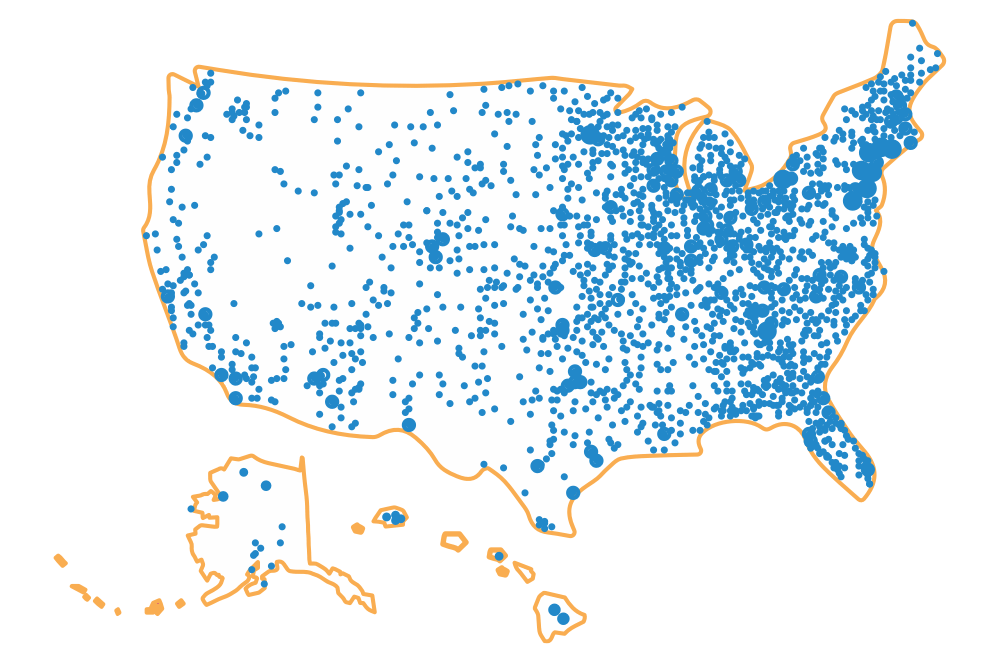Parents and grandparents show their love in a thousand different ways, which can include saving for their children’s and grandchildren’s education after high school. Remember, a college savings account is an investment in their future. Here are 14 reasons why to fall in love with Ohio 529 CollegeAdvantage.
Save here, use anywhere
Just because you are saving in Ohio 529, it doesn’t mean your child can only attend Ohio schools. You can use your Ohio 529 account nationwide at almost any school where you are comfortable sending your child and your money. 529 plans can be used at any post-secondary school that accepts federal financial aid. If you want to confirm a higher education institution accepts federal aid, then do a Federal School Code search. If it has one, then you can use your 529 funds there.
Not just for four-year college
At what kind of schools can you use your Ohio 529 account? There are over 30,000 to choose from! An Ohio 529 account can be used for whatever comes after high school, like trade and specialty schools, community colleges or technical schools, certificate programs, as well four-year universities and colleges, and all types of graduate school. Additionally, 529 funds can pay for qualified costs for apprenticeships that are registered with the Secretary of Labor’s National Apprenticeships Act. As an adult, you can also use a 529 college savings plan for your own continuing education. Whether it’s to complete your degree, earn additional credentials to grow your career, or take a new career path, a 529 plan can help you earn the education for which you’re striving.
Just $25 to start
You can start saving with as little as $25 for an opening contribution to start an Ohio 529 account. Each additional contribution starts at $25, too. As Ohio 529 doesn’t believe in charging you to do the right thing for your children and grandchildren, there are no fees to open an Ohio 529 account. We know there’s a lot of expenses in your budget but saving for your child’s education shouldn’t be a large draw on the family finances. After all, $25 saved now is $25 (plus compound interest) that doesn’t have to be borrowed later.
Ready to save with the READYSAVE 529 app!
Ohio 529 offers the READYSAVE 529 app, so you can manage your savings from your phone! The app makes it easy for you to access your account information, track account growth, and make one-time or recurring contributions from your bank account from your cell phone. The READYSAVE 529 app is available at the Apple and Google Play app stores. Once installed, select Ohio’s 529 Plan from the list and log in with the same username and password you use to access your account online.
Tax-free earnings
All earnings grow tax-free when saving with Ohio 529. This means that all the investment growth is yours to use for your children’s future college costs. Combined with the power of compound interest, your savings can really grow. To see just how tax-free growth adds up with a 529 savings plan, use the tax benefit tool to see the difference between a 529 plan account and a taxable savings account.
Tax-free withdrawals
Withdrawals to cover qualified higher education expenses are tax-free for federally accredited programs. These expenses are the major required costs of a education after high school like tuition, room and board – on and off campus, mandatory fees, computers, and more. As with all 529 college savings plans, the burden of proof for qualified expenses and withdrawals is on the account owner for tax purposes. Retain all documentation of your payments of the 529-qualifed expenses. Tax-free 529 withdrawals can also pay for certain expenses associated with apprenticeship programs that are registered and certified by the Secretary of Labor under the National Apprenticeship Act.
Ohio income tax deduction
An Ohio resident who saves in an Ohio 529 account can deduct their contributions from their taxable state income. The deduction amount is $4,000 per year, per beneficiary, with unlimited carry forward. To be clear, $4,000 is not a contribution cap. If an Ohio taxpayer contributes more than $4,000 in one year, they can continue to subtract $4,000 per year, per beneficiary, from their State of Ohio taxable income until all Ohio 529 contributions have been deducted.
Compound interest
What’s so special about compound interest? Compound interest is interest earned on every contribution, all earnings from your 529 investment options, and the already accumulated interest. And it’s included in your tax-free earnings. Compound interest can help your college savings account grow even faster.
Others can save with Ugift
When family and friends ask for gift ideas, tell them that they can help with a big milestone in your child’s life—their higher education—with a contribution to your child’s 529 plan. With Ugift, it’s simple for anyone to contribute to your CollegeAdvantage Direct Plan account. Log in to your 529 and click on Ugift to receive a unique code for your account. This code allows others to make online contributions from their bank account to your 529 plan without the actual account number at Ugift529.com. The gift giver can make one-time or recurring electronic contributions at any time. If they are Ohio residents, they can deduct their Ohio 529 contributions up to $4,000 from their state taxable income. You can also send an Ugift invitation to your family and friends to contribute to your child’s higher education with the READYSAVE529 app.
Upromise
Ohio 529 has teamed up has teamed up with Upromise to help you save more without any extra effort. Upromise is a free loyalty program that offers its members cash back for their purchases from a wide variety of businesses. When you connect your debit and/or credit card to your Upromise account, you can start earning rewards with your everyday shopping. You can then link your Upromise account to your Ohio CollegeAdvantage Direct 529 Plan account to deposit these rebates.
Minimum effect on financial aid
Being proactive by saving for your child’s or grandchild’s higher education in a 529 plan will not dramatically impact eligibility for financial aid with FAFSA. Current federal guidelines state that if a student is a dependent and the 529 account is owned by a parent, then the account will be considered the parent’s asset and will be calculated at a maximum of 5.64% of its value. So, let’s say, you’ve saved $10,000 in your 529 account. Only $564 would be considered as an asset on FAFSA. And wouldn’t you rather have $10,000 for college than potentially lose less than $564 of financial aid? Also, starting with the 2024-2025 school year, 529 funds from a grandparent-owned 529 funds are not considered as an asset to beneficiary and won’t be included in the calculations for financial aid.
Use with scholarships
529 plans are made to work with scholarships. Your Ohio 529 account is still an important component of your college planning strategy. Very few scholarships cover 100% of the costs; for instance, a scholarship may only cover part of tuition expenses. A 529 plan is perfect to pay for any qualified expenses that the scholarship doesn’t cover.
Also, you can withdrawal the exact amount of the scholarship from your Ohio 529 account. This would be treated as a non-qualified withdrawal, but only the earnings portion of the withdrawal will be subject to federal and state taxes. A scholarship withdrawal is exempt from the 10% federal tax penalty.
Options if child doesn’t go to college
You have options if your child doesn’t want to continue their education right after high school. First, there is no deadline on when to use a 529 account. So, you can wait to see if your child changes their mind. The funds will be ready to use for whatever education they want to pursue, a four-year degree, community college, trade or technical school, apprenticeship, or certificate program later.
If your child absolutely decides against using your 529 plan, you can transfer the 529 account to another member of the family—anyone related by blood, marriage, or adoption—without any fees.
If your child is starting their career at U.S. military academy, then you can make a non-qualified withdrawal from the 529 account up to the estimated cost of attending the military academy without incurring a 10% federal tax penalty. Only the earning portion of the withdrawal will be subject to federal, state, and local taxes.
If you reach a point where your 529 account is simply not going to be used, you can request a non-qualified withdrawal from it. The earnings-only portion of the withdrawal will be taxed on the federal, state, and local level. Like other tax-advantaged saving programs, there will be a 10% federal tax penalty assessed for withdrawing money from the 529 plan for costs that aren’t qualified higher education expenses. Before you elect to make a non-qualified withdrawal, first talk with your financial advisor, or tax consultant to evaluate your options.
However, as of January 1, 2024, you also have one more option.
Roth IRA rollover
You can now roll over any remaining Ohio 529 funds into a Roth IRA for the same beneficiary of the original college saving account without incurring any penalties. So, if your child doesn’t use all the funds in the account, you can use those 529 funds to kick off their retirement savings. Your 529 account must meet certain requirements to use this new qualified distribution. Please consult a financial professional or tax advisor regarding the applicability of these rollovers to your personal situation.
Visit Ohio 529 CollegeAdvantage online to start saving today for your child’s future education. An investment in a 529 plan is an investment in your child where every dollar saved today is a dollar that doesn’t have to be borrowed later. Learn, plan, and start with Ohio 529 today at CollegeAdvantage.








